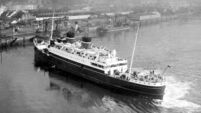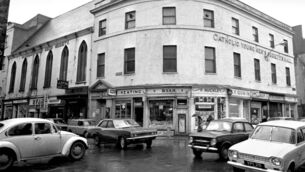Throwback Thursday: My childhood days living in Cork city barracks
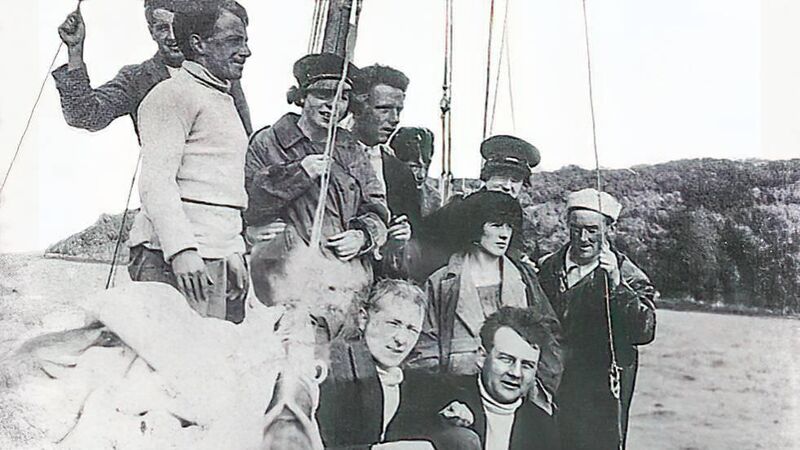
A sailing party in Cork Harbour around 1920. The woman second from the right in front is Josephine McCoy who, during the War of Independence, worked in the office in Victoria Barracks. Picture suppled by John Kenny
YOU may recall that regular contributor Rose, from Ballyvolane, had some difficulty matching fellow Collins Barracks childhood memories from Pat Kelly with her own, since she just couldn’t remember him or indeed his family.
Now, we put this to Pat, of course (since we can’t bear an unanswered puzzle), and he was most willing to, as he expressed it, “put Rose out of her misery” to the best of his endeavours.
Don’t forget, by the way, that Pat, though making a full and welcomed recovery from a brain tumour and subsequent surgery, is still struggling a bit with former keyboard skills. Well done, Pat, for making this additional effort.
The problem was, of course, that Rose had not shared her full name with us, so Pat was a bit hampered.

“Since I don’t have her surname, I can’t help on that side, but it could just simply be that we lived there before her time,” said Pat.
“My parents, my brother Jim, and I moved from Haig Gardens during 1946. I was just three, and my brother Jim was two.
The names that I remember from my time there were Egans, Dunnes, Connolly, Tommy Maher, Graham, Daly. But I think I have forgotten many more. My own dad’s name was Jack Kelly, and he was in Ordnance.
“Actually, I do remember that you asked recently for our memories of dads and mums. Well, my dad boxed for the Army at welter- weight, and won the North Dublin league one year. The following year he was runner-up in the South Dublin league.
“He also ran cross country for the Army. He was one of the soldiers, during the war, who went cross country, fording the Blackwater at night. They made their way through fields, taking a brief rest for a brew up of tea, and then carried on through the total darkness across land and fences and ditches, finally marching into Cork the following morning.”
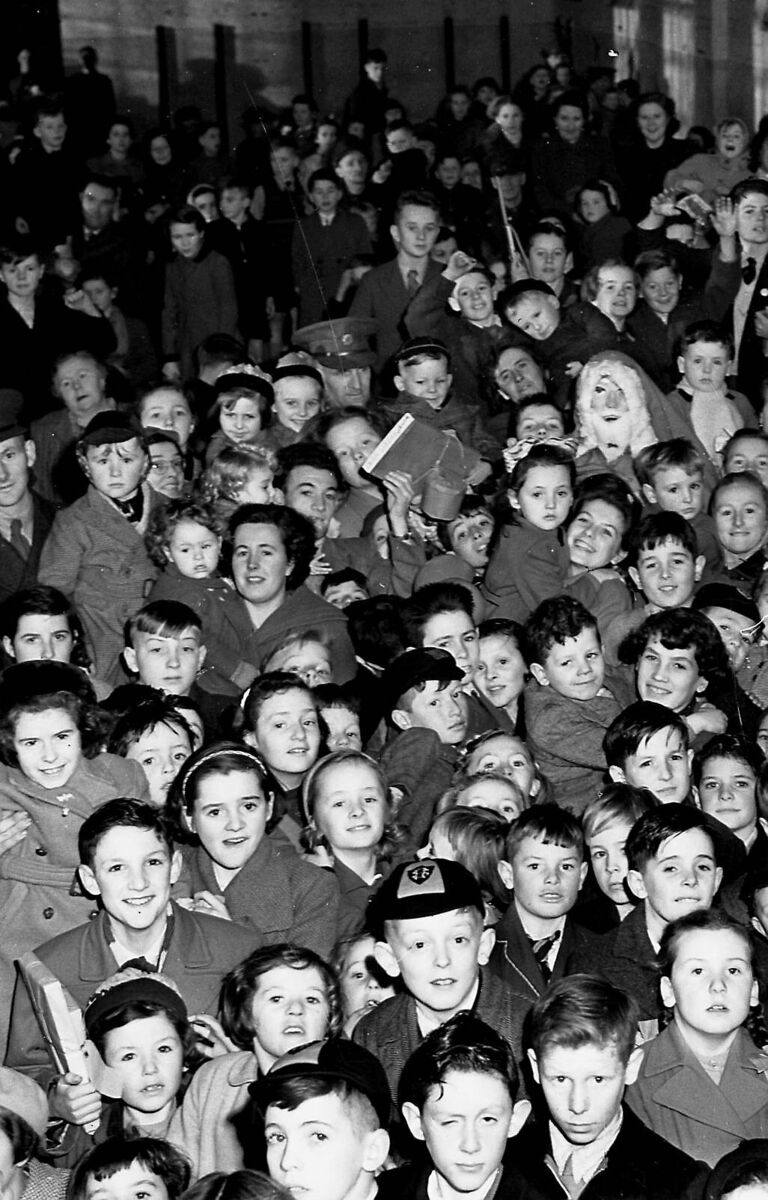
Pat continues: “Going back to the barracks, I do remember the Christmas party in the Gymnasium, where we children would be delighted to be given small toys (that was quite something back in the 1940s, I tell you), and there was plenty of tea, where the tea was poured from a large kettle, over-sweetened (but that was a treat too!), and well milked.
“Plus, of course, buns, which were received with great delight.
“I do not have many memories of the old St Patrick’s School, but I do remember it was cold and dark. The outside toilet was a small room, with a plank that had a hole in it.
“There was a window about 4ft up, where little boys (being little boys!) would have a competition called ‘pooley up the highest,’ where the most determined would try to pee out the window!
Around 1951, we moved back to Haig Gardens, where our mother got us into the Model School. My brother, Jim was put in First Class, and I started in Second Class.
Pat adds: “You know, writing all this down, more names come back to me of the families who lived in the same block as Rose. There was one family called Delahunty, and there was Dan Hanlon with his large family, and others called Cassidy and Foster.
“Dan Hanlon was my dad’s best friend When Dan died, his coffin was carried into Rathcooney graveyard by his six daughters. They loved their dad.
“I really liked the mention by Liam O’Shea last week of the fever hospital up at the top of Richmond Hill and the steps leading to them. I would like to enquire though, were any of the readers of Throwback Thursday ever a patient there? We were!”
Pat explains that his family moved to a housing estate in Cork city in December, 1953.
“Right behind the house was a farm yard, with a cesspool where animal droppings were dumped, together with human waste. My mam simply could not open the back door because of flies, and the danger of rats.
My siblings and I contacted dysentery from the dirt in that farmyard. In fact, the only member of the family who escaped was our mam.
“My brother, sister, and I were isolated in the North Fever Hospital, where we were treated for the infection. Our house was also isolated, and the health board at the time inspected it carefully.
“Of course, it was scrupulously spotless, but one of the team spotted the health hazard from the back window, and gave the farmer notice to move it and make the place safe.
“My dad, being a countryman, reasoned that we were the blow-ins, and the farmyard was that man’s living. In the event, nothing was done”.
The farm and its land later became a housing estate.
Pat goes on: “Mention was also made of the Shilling Stores. In my childhood, it was at the corner of Oliver Plunkett Street and the Grand Parade. Much later, that premises became a flower shop. I remember Norman Murphy, as a child helping in the shop, and much later his son was Darragh Murphy TD.”
Great memories as always, Pat. Keep on sending them in! All power to your returning skills on the keyboard. You’re an example to all of us.
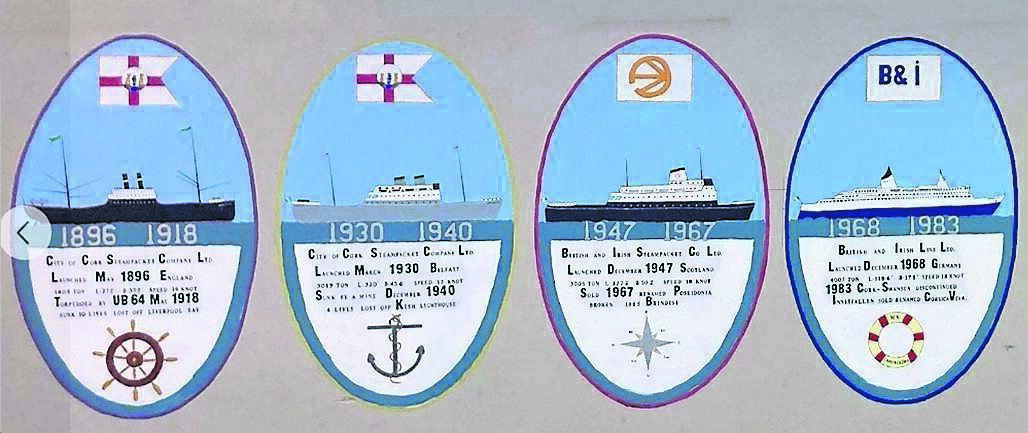
Now, of course we have had more correspondence on the great old Innisfallen, whichever of its forms and existences you knew.
Do you remember when it came right up to Horgan’s Quay in the early morning? Those living above on Summerhill could look out their windows and see it sailing up past Blackrock Castle.
Unless you are of very distinguished elderly years, and can remember an even earlier Innisfallen, that would have been the boat which took us back and forth from Wales between 1948 and 1968. Old-fashioned, but very traditional in its polished brass, it had distinctive black and white paintwork.
If, on the other hand, you can remember going down to Silversprings, by the Skew Bridge, then it was the newer, more elegant Innisfallen model, the first drive-on, drive-off we had, which took over in the summer of 1968.
Before that, cars were swung on board by nets and cranes, and taken off the same way.
Jerry Holt, who shared his memories of first coming over from England, says it was definitely the old black and white one that he travelled on, and he remembers it with fondness.
“We eventually moved out to Coole East, Whites Cross, as I have mentioned in earlier Throwback Thursdays. I was sorry to hear that the Blackman pub at the top of Dublin Hill, on the old Dublin Pike, is on the market, I had many a pint from Bobby Healey and family, and when I win the Lotto I shall buy the premises and give free drink to all the old-timers on condition they share their stories to Jo Kerrigan!”
Well, we won’t argue with that, Jerry, indeed we won’t, and here’s to your good luck!
“The next pub on that route beyond the now closed Stirrup at Whites Cross is the Boothouse at Upper Glanmire,” continues Jerry. “In fact the Stirrup was our ‘local’ and I have many fond memories of Doc Hennessy, Eileen and their children, Coleman, Pearl, the late Michael, and Lorcan, who still operates the thriving filling station and grocery at the Cross.”
Are you reading this, Lorcan? Jerry says hi, from Mayo, where he now lives (but still misses Cork, as who wouldn’t?)
But back to the Innisfallen. Did you know there is a very nice mural on the wall of the public car park behind the Maritime Museum in Passage West? It was painted by Neil O’Sullivan about two years ago, as a favour to the founder of that museum, Jim Murphy.
I do a few of these murals around Passage from time to time, just to brighten the place up,” explains Neil, “and usually change them every few months.
“I wanted to paint over the Innisfallen to do an RNLI 200th anniversary mural, but surprisingly, I was asked not to. It seems that the Innisfallen and train murals have become big tourist attractions, and are now part of a local historical walk!”
We aren’t surprised, Neil. There is great nostalgia for the old ways of transport, when life was simpler, and we didn’t all jet off to Kathmandu or Perth for weekends.
A trip on the train, a sea voyage on the boat - those were events to be remembered life-long.
You who are reading this, why not nip down to Passage on your next free weekend and stroll along the quayside there, visit the museum, look at the historic objects and paintings that show a town once bustling with shipbuilders and trade.
It was from here the great little sidewheeler Sirius, commanded by Lieutenant Roberts RN, set out to make the first steamship voyage to America in 1838, beating the mighty Great Western by one day and thereby ensuring herself and her captain a place in the history books. It really is worth reprinting the report in a newspaper of the time:
“[The Sirius] came to anchor in the North River early in the morning of the 23d May. The news spread like wild-fire through the city, and the river became literally dotted all over with boats conveying the curious to and from the stranger. There seemed to be a universal voice in congratulation, and every visage was illuminated with delight…
“Whilst all this was going on, suddenly there was seen over Governor’s Island a dense black cloud of smoke spreading itself upward, and betokening another arrival. It was the steam ship Great Western, of about sixteen hundred tons burden, under the command of Lieutenant Hosken, R.N. She had left Bristol on the7th inst, and on the 23rd was making her triumphant entry into the port of New York.”[Quoted in J. Kerrigan, Stories from the Sea, O’Brien Press 2021.]
But she was just too late, wasn’t she? Cork and the Sirius had seized the accolade! Can’t you imagine Lt Roberts’ barely-concealed smile as he courteously saluted the huge ship steaming past him and into second place?
All Cork’s ocean-going ships left from and came into Passage back then, because the river up into the city wasn’t deep enough to take them. Once the waterway had been dredged, though, Passage fell back into a quieter mode, as industry moved elsewhere.
And, incidentally, did you know that up into very recent times, friends and families would build signal fires on the cliffs around Cork Harbour, to say good bye to those emigrating on the Innisfallen and other ships? Probably wouldn’t be approved by Health & Safety these days, but it must have been a comforting sight for those on deck, wondering what the future held, and when they would see loved ones again.
Still on the theme of boats, and coincidentally with a link to Collin’s Barracks, here is an interesting query, complete with photograph, which is sure to set our regular readers searching the records.
John Kenny writes to say: “I am an avid reader of your weekly page, which I always find interesting and informative.
In recent months I noticed that Throwback Thursday has been used by readers to identify individuals in photographs of former days.
“I attach a photograph which was taken approximately in 1920 of a sailing party in Cork Harbour. The woman second from the right in front is Josephine McCoy who, during the War of Independence, worked in the office in Victoria Barracks (now Collins Barracks). She supplied information to the IRA high command in Cork. My father was an Intelligence Officer in Cork during the war of Independence and when he died, I found this photo among his papers. It was in very poor condition, and I got it copied and touched up, but the original unfortunately disintegrated.
“I would be grateful if any of your readers could name other people in this photograph.”
Well, isn’t that a fascinating glimpse into forgotten history? There surely must be some details that the research fiends among our readers can add. And there can’t have been that many families or groups of friends who were in the habit of sailing around Cork Harbour in the 1920s, can there? Members of the Royal Cork, the world’s oldest yacht club, perhaps?
Let’s hear from you with your suggestions. Email jokerrigan1@gmail.com. Or leave a comment on our Facebook page: https://www.facebook.com/echolivecork.
